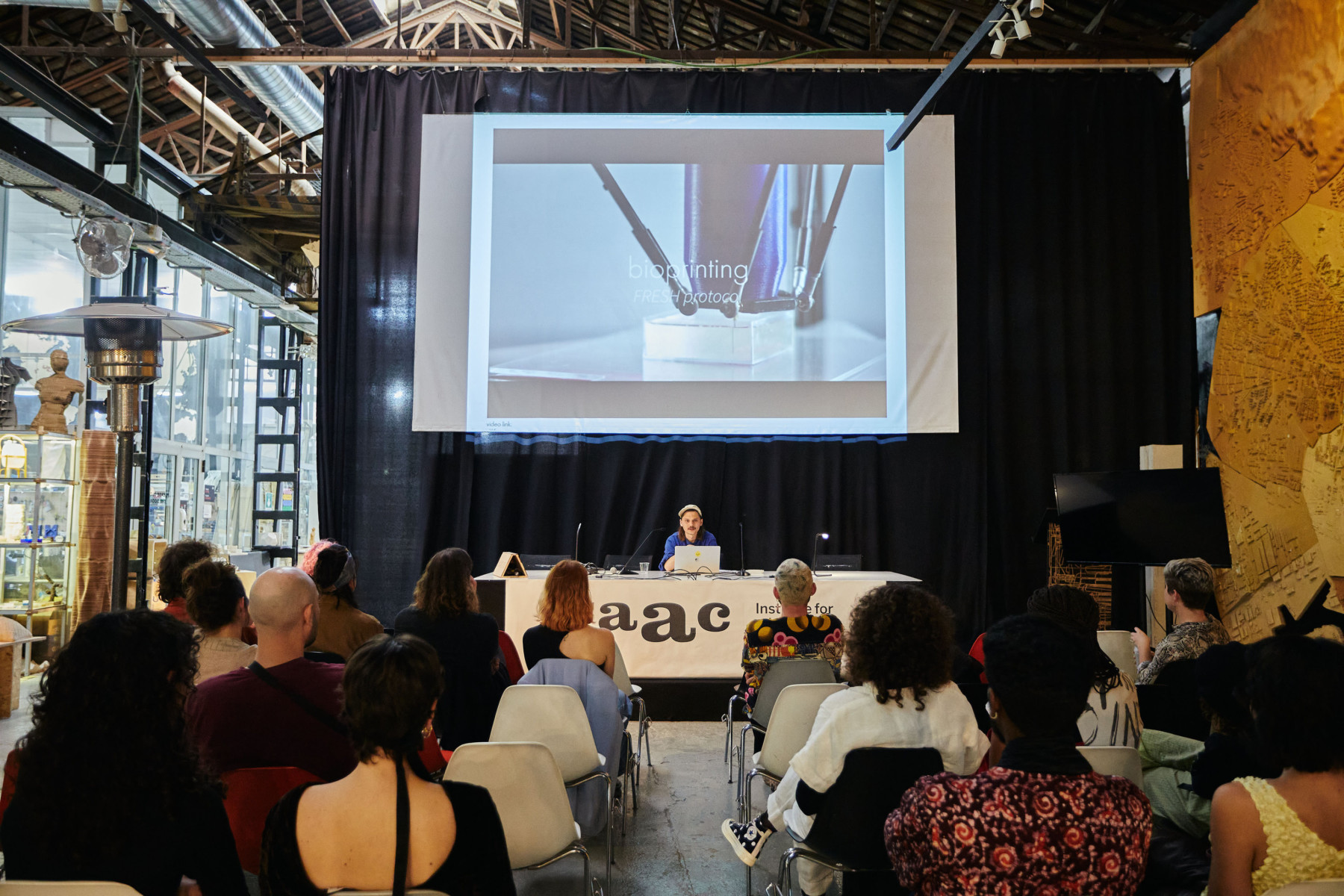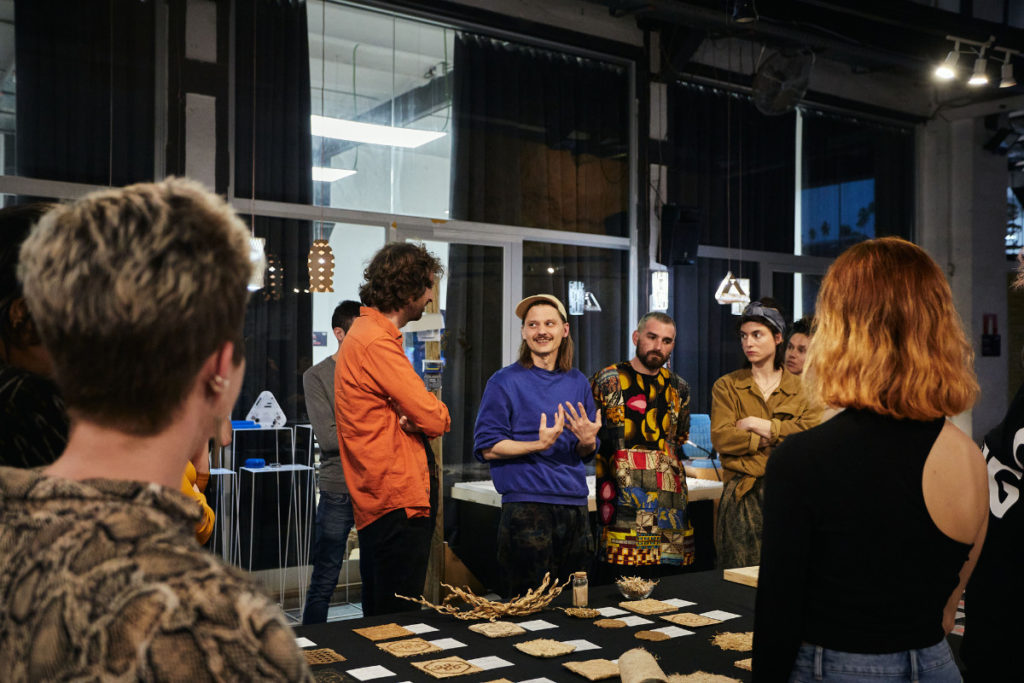
How to bioprint bacterial cellulose
A new Fabricademy research project explores a different way of building a decentralized supply chain.
Meet Alve Lagercrantz, a Swedish fashion designer based in Berlin investigating how to bioprint bacterial cellulose to make garments, as a new way of building a more decentralized supply chain. In the following interview, he tells us why he joined Fabricademy, what he learned during the intensive programme and how he came up with his final research project.
1. Why did you choose to do Fabricademy?
Through the experience of operating my own brand and working for others, I was quite fed up with how the fashion industry was working. I was already researching and thinking about new solutions to produce garments based around circular design, microbiology and digital fabrication but I was also looking for a platform where I could transfer those blurry ideas into practical experiments. Fabricademy seemed (and is!) the perfect combination of all those different fields.
2. When did you feel like it was time to apply?
I had actually been following the course for quite some time. My decision to apply was a bit last minute as always.
3. What tools and techniques have you explored so far?
So many. I feel like there is an endless amount of different tools and techniques. For my final project, I’ve mainly been focusing on bioprinting using a hacked desktop 3D printer. It’s been super interesting because the bioprinting technique is normally expensive and something that belongs more to medicine and engineering so it was great to learn how to find more ways to do it myself here. What has also been intriguing for me is the concept of open source software in terms of how to be able to share knowledge with each other and what power that could have.
4. When did you realize you had an idea you could develop here?
Before starting Fabricademy I had a vague idea that I wanted to investigate. Would it be possible to bioprint garments to circumvent today’s supply chain? For me, it was exciting to learn how to find accessible DIY solutions for a technique that otherwise is very expensive and unapproachable.
5. Tell us a bit more about your final project.
It’s a research project that is investigating how we can bioprint bacterial cellulose to make garments from, as a new way of building a more decentralized supply chain. I’m working with a technique called fresh bioprinting that’s developed mainly for medicine and tissue engineering. For this I’m using bacterial cellulose which is a nano cellulose that is super interesting in its properties. It’s actually much stronger than cotton, for example, which is another cellulose fiber. It also has this great advantage that we’re able to grow it straight in a lab or studio environment so we don’t need this whole complex supply chain that fashion today is built on. If you compare this to how many years it takes to go from a cotton field into a finished garment, it’s a pretty simple and quick process.
The bioprinting technique is normally expensive and something that belongs more to medicine and engineering so it was great to learn how to find more ways to do it myself here.
Another interesting thing is that the fresh bioprinting protocol allows us to kind of augment the property of the material, so that we could potentially create other types of behavior. Not just a leather type fabric for example, but also a thick outer coat or many other things. I’ve been experimenting a lot with different types of techniques, layerings and after treatments which all create very different results so you can give it a lot of different properties actually.
6. Any struggles during the making of your final project?
Since my project is based on quite complex theories or techniques belonging to medicine, I think my biggest struggle has been to be able to decipher all these really intricate and long research papers and to really understand how they are doing it. Also finding ways to be able to share this in a more accessible way in the future.
7. Did your peers help you in prototyping your idea?
Through the whole course, we have been sharing a lot of ideas and knowledge. All of us are coming from different backgrounds, some from journalism, some from fashion and so on. It’s really cool how we can bring together all the different knowledge and help each other. I hope that in the future we can continue to build stuff and share ideas and resources.
8. Who would you recommend Fabricademy to?
One of the best things about this program is that it’s so broad in its approach – it touches on so many different fields and topics. I think it would be interesting for literally anyone with some kind of passion for new ideas and solutions.
One of the best things about this program is that it’s so broad in its approach – it touches on so many different fields and topics. I think it would be interesting for literally anyone with some kind of passion for new ideas and solutions.
9. How do you see your future after studying Fabricademy?
I want to find ways to continue working on this project. It’s still in the first research stage. I would also like to think about how this could have more industrial applications in the future.
10. If you were a material, which one would you be and why?
Bacterial cellulose because that’s what I’ve been working with and I kind of started to identify with it. It loves sweet stuff and tropical climate. I think that’s pretty much me!
Curious to learn more?
Read everything there is to know about Fabricademy!



